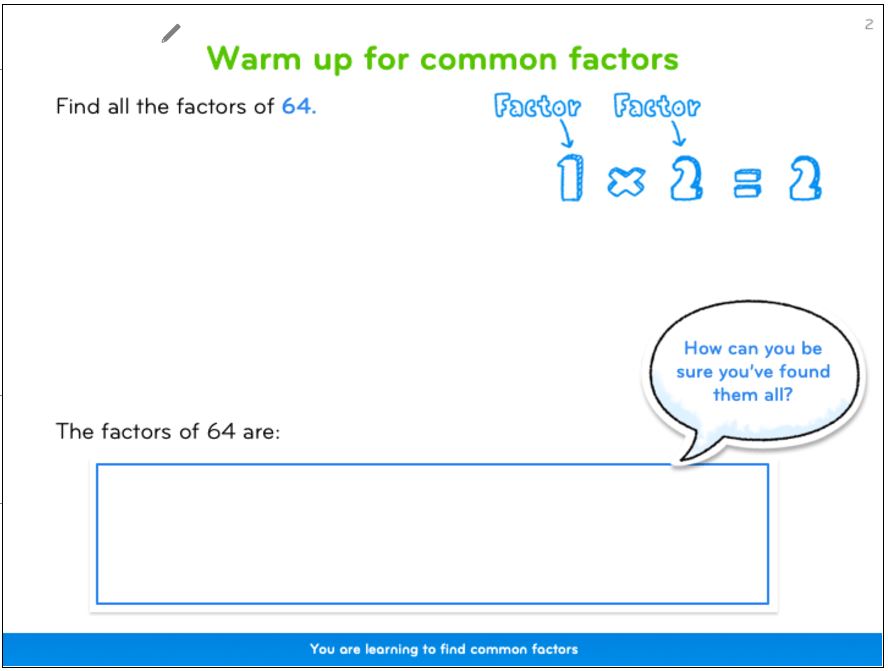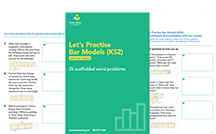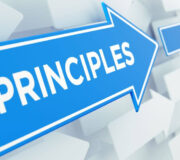Effective Questioning In The Classroom: 9 Tried and Tested Techniques For Teachers
Effective questioning in the classroom can make or break your lesson. These questioning techniques are ones that I use time and again in my primary school lessons; the questioning examples given are drawn from maths but the principles apply across the curriculum.
I am a Key Stage 2 teacher, but I’ve seen secondary colleagues use similar questioning techniques in the classroom in Key Stage 3 and Key Stage 4.
- What is questioning in the classroom?
- Why do we need effective questioning techniques in the classroom?
- List of the 9 most effective classroom questioning techniques
- 1. Are you sure?
- 2. How do you know?
- 3. What do you notice?
- 4. What’s the same and what’s different?
- 5. Can you convince me?
- 6. Is there another way?
- 7. Is it always, sometimes, or never true?
- 8. Can you imagine?
- 9. I think I understand what you mean, are you saying?
- Don’t rush the answers when questioning in the classroom!
What is questioning in the classroom?
Effective questioning is an essential teaching skill that enables the educator to check pupils’ understanding, broaden and deepen the topic under discussion, and model clear thinking skills, and speaking and listening skills.
Why do we need effective questioning techniques in the classroom?
“Good learning starts with questions, not answers.” Guy Claxton, Professor in Education and Director of CLIO Development, University of Bristol.
And better questions tend to deepen and facilitate the learning process in the limited amount of time you have with your students, so let’s make the most of them.
Here’s are the top 3 reasons I believe in the importance of teacher questions.
- Firstly, if we remember our assessment for learning training, we will know that questioning in the classroom in the classroom is a powerful formative assessment tool. Executed properly, higher order questions from the classroom teacher gives the teacher the opportunity to gauge student understanding of the topic as well as enabling students to actively participate in their own learning.
- Secondly, a well thought out questioning strategy can help to build the relationship between teacher and pupil by encouraging engagement and improving verbal fluency of key concepts whether in primary maths or any other subject.
- Thirdly, good questions also lead to good class discussions, better student interactions, and ultimately, the shared understanding that is part and parcel of the learning experience.
See also: How To Learn Maths
List of the 9 most effective classroom questioning techniques
This article will guide you through the 9 key questioning skills that, together with other teaching strategies, will have the most impact on your teaching and your classroom practice.
The majority of these 9 are open questions; they require longer, more thought out answers than those that only need a simple, short response (closed questions).
This means these types of questions usually won’t have either a correct answer or a wrong answer – an idea pupils may need some time to fully understand and accept.
1. Are you sure?
Developing pupils’ metacognition and critical thinking skills are crucial if we want them to be less reliant on the teacher as the person who ‘knows’.
If a pupil is used to asking a teacher ‘Is this right?’ and getting a response then they are likely to not have checked their answer, not gained a deep enough understanding of the concept they are learning or have their need for affirmation so ingrained over years of schooling that they simply have to ask.
Asking ‘Are you sure?’ with a questioning tone will instantly flip the tables and create blind panic amongst your whole class. Especially when you ask the question as often when they are right as wrong. Even more so if you follow it up with ‘Well okay, if you are sure…’ or ‘If it makes sense to you…’
Now, obviously blind panic is not what we are aiming for, but it is a stage they will need to briefly enter until they get used to this and the other questions in the post.
Soon, especially if you encourage a growth mindset in your primary school, they will pick up the idea that they really have to know if they are right or not and crucially, why. This leads us into a key follow-up question…
Other relevant articles
2. How do you know?
To be able to answer ‘Are you sure?’ confidently, pupils will have needed to have checked their calculation/explanation themselves, more and more often before they have even given their initial response. Asking ‘How do you know?’ ensures this by asking them to share their reasoning with you, a group or the whole class.
This question is also a great way to really develop students’ thinking skills; they need to be clear not only that they have the right answer, but that they arrived at it by following the right method.

The result of this increased metacognition is children will be more reliant on themselves (and each other) for checking their understanding, method and answer.
3. What do you notice?
Alongside metacognition, developing pupils’ ability to generalise can reap huge rewards. In other words, encouraging pupils to be mindful and look for patterns within and outside the mathematical area currently being learnt. This also helps their number sense.
Asking pupils ‘What do you notice?’ when showing 2 calculations or problems at the same time can help children to see what is similar and different. It’s a key question when building procedural variation.
It also uncovers where a pupil’s understanding is, showing whether their current line of thinking is relevant to the current learning, in turn enabling you to nudge them towards more relevant thinking where necessary.
In a lesson on exchanging you could ask the following question.
| 47 – 8 = 39 |
| 47 – 6 = 41 |
- What do you notice about these two calculations?
- This may yield answers such as:
- ‘8 and 6 are both even’ which are not particularly relevant,
- ‘the 4 and the 6 can be added to make 10’ shows up misconceptions
- ‘you don’t have enough ones (7) to subtract 8 but you do with 7-6’ which shows pupils are making relevant connections
- From here it is a small step to ask for generalisations about subtracting ones from ones that can be applied whenever faced with that situation. eg ‘You must always exchange when you try and subtract more ones than you have.’
4. What’s the same and what’s different?
If you want a similar type of question that serves the same purpose as ‘What do you notice?’ but is more confining in its responses, asking ‘What’s the same and what’s different about these 2 calculations / problems / statements?’ will push that conversation on with you still guiding the direction.
5. Can you convince me?
This is another question that can help develop generalisation. Asking individuals or small groups to work together to convince you of something develops their depth of understanding and ability to reason.
Here are some maths question examples:
- ‘Convince me that subtraction is the opposite of addition’
- ‘Convince me that all multiples of 8 are multiples of 2’
Flipping around the previous question’s example, ‘convince me that you always need to exchange when you subtract a 2 digit number (subtrahend) where the ones are greater than the initial number (minuend)’
Let's Practise Bar Model Word Problems: KS2 Worksheet
Bar Modelling worksheet of 25 scaffolded word problems, suitable for use in a mixed ability classroom and for mastery approach
Download Free Now!6. Is there another way?
- ‘Is there another way to find 25% of £80?’
- ‘Is there another way to work out 47 + 28?’
- ‘Is there another way you could have used to find all the possibilities?’
These kinds of questions help children who have not used a modeled or shared method realise they are not ‘wrong’ because their problem solving method is different (they may be less or more efficient). It will also highlight to children that in Mathematics, as in life, there are many ways to skin a cat. It can also be used as a general challenge activity for pupils.
7. Is it always, sometimes, or never true?
This is a great higher-order thinking question to further develop children’s ability to generalise and, dependent on the specific question used, their number sense. As with all the questions, it develops reasoning skills and can deepen understanding.
For more always sometimes never questions download this free resource of 108 questions to help children get to greater depth
- ‘Is it always, sometimes or never true that you should round and adjust when you subtract 9 from a number?’
8. Can you imagine?
Building pupils’ ability to visualise things without actually doing it themselves helps in a number of disciplines such as Computing or Science as well as mathematics. Looking specifically at mathematics, it helps pupils understand problems and raises their ability to reason with greater understanding.
So in a word problem, if you ask a pupil to imagine the train pulling up at that station at that time and then continuing on its journey to the next station, it can help contextualise an abstract time problem.
This type of questioning in the classroom is also a handy way to nudge children away from requiring concrete apparatus when you think they are ready, for example, ‘Can you imagine exchanging that ten for ten ones?’
9. I think I understand what you mean, are you saying?
Okay, so our final question is more of a leading question than an open-ended question, but it is still a very valuable tool. You will always find times where a pupil’s ability to verbalise their reasoning is not quite at the same stage as their actual thinking and thought process.
Dependent on the situation and the pupil, you may find it supports them, your discussion or the pace of the lesson in general by reflecting on the students response by saying
- ‘I think I understand what you mean, are you saying you would always round and adjust because you know that 9 will always be next to 10 so you will always be able to do the same adjustment afterwards?’
In other words, build on their reasoning, making it sharper or more concise so that the group or whole class can develop their understanding and the pupil giving the explanation can internalise their understanding further.
There are several variations on this question, such as ‘
- You’ve really tried hard to explain that… are you saying…’ or
- ‘It’s a really difficult thing to explain, you’ve helped me understand it I think. Is this what you mean…’
So there you have it. Almost 9 questions that when used across school will significantly impact on teaching and learning and ultimately, enable all pupils, high and low ability students, to achieve with the National Curriculum, SATs and in using mathematics in their general lives.
Don’t rush the answers when questioning in the classroom!
One final piece of advice if you’re new to these questioning strategies – think about how you’re going to be handling the answers to your questions too.
Give students time to think about their answers, prompt them for when you’re looking for a long or a short answer, encourage the entire class to think about their own answers using their mini whiteboards to share their own thoughts.
These are the higher order skills from Bloom’s Taxonomy at work here, so it can take more time than usual. This is the learning process in action!
Read more excellent teaching and professional development articles
DO YOU HAVE STUDENTS WHO NEED MORE SUPPORT IN MATHS?
Every week Third Space Learning’s specialist school tutors support thousands of students across hundreds of schools with weekly online 1 to 1 maths lessons designed to plug gaps and boost progress.
Since 2013 these personalised one to one lessons have helped over 150,000 primary and secondary students become more confident, able mathematicians.
Learn how the tutoring integrates with your SEF and Ofsted planning or request a personalised quote for your school to speak to us about your school’s needs and how we can help.





